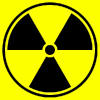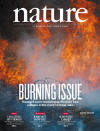|
|
|||
|
Nuclear waste disposal in West Cumbria Summary |
|||
|
The Document library
archives a vast array of papers that should be publicly available, but
are not. In addition it hosts all my own documents, presentations and
slideshows. Here is a very short, non-technical summary of my views, in the form of written evidence presented to the informal ad hoc group of Cumbrian MPs who met on 10 January 2013. I was unable to attend in person. Cumbria County Council wisely decided on 30 January 2013 to withdraw from the MRWS process, which therefore came to an end. CCC's two principal grounds were the democratic deficit and the unsuitable geology. An editorial in the prestigious science journal Nature a week later concluded that the failure this time was due simply to a "lack of political will", and never even mentioned the geology. I was able correct some of the errors in a letter published on 28 March 2013. However, because the two local boroughs, Copeland and Allerdale, voted to proceed, the government is now trying to change the rules of the game so as to circumvent the county's veto. DECC's analysis of the Call for Evidence consultation (ending in June 2013) was dishonestly analysed; it is now trying to use the manipulated results from this 'consultation' to make borough councils the lead decision body. This is aimed at cutting county councils, in other words, Cumbria County Council, out of the game. Full details are supplied here. The new proposals also have serious implications for bringing forward the date when the Right of Withdrawal (of a volunteer community) will end. It seems to me that only a Judicial Review or even some sort of legal judgment from Brussels will stop DECC. History The UK government was trying to find a suitable site for a high- and intermediate-level nuclear waste repository in West Cumbria, the only region in England and Wales which 'volunteered' itself. But this was the very region in which £400M of public money was spent by Nirex, the former waste disposal agency, in its researches in West Cumbria. The Nuclear Decommissioning Authority (NDA; successor to Nirex) airbrushed out the history of the previous abortive attempt to find a nuclear waste repository in West Cumbria. This attempt culminated in the 1995-96 Sellafield Public Planning Inquiry, at which the Inspector turned down Nirex's appeal against refusal of planning permission. Here are the Inspector's conclusions. Subsequently, documents and scientific papers which were formerly available on official websites were removed; the Nirex documents were transferred to the safe keeping of the British Geological Survey, where they may be 'consulted' at Keyworth, Nottinghamshire. To counteract this censorship I have created a document library of all the relevant evidence, including my own papers and slideshows on the subject. I have further analysed in detail the Nirex site selection process; here is the complete list of 537 UK sites identified in 1988, leading to the choice of Sellafield. The sites were confidential till 2005. They can be found on the NDA website, but only on a county-by-county search. Nirex's belated attempt at transparency in recording the history of UK site selection was still disingenuous in 2005. It tries to obfuscate the fact that Sellafield-B (in effect, the Longlands Farm site) was never in the initial BGS list of 537 sites to be sieved. To cut a long story short, both 'Sellafield' sites should have been eliminated early on in the sieving process, and one of the finalists, Stanford, Norfolk, should have been declared the best site on the criteria employed at that time (that does imply that it is the best site now). The current process The government's strategy to overcome its failure to find a safe disposal site as follows:
I am not against geological disposal in principle. But we cannot permit the government's essentially underhand strategy to override the fact that West Cumbria is, by any objective scientific standards, completely unsuitable. There are, on the other hand, vast regions in eastern England where a suitable repository site could be found, either in thick clay or in hard crystalline rock below flat sedimentary layers. The British Geological Survey was employed in 2010 to prepare its Initial Geology Unsuitability Screening of West Cumbria. Its remit was tightly constrained, to give the misleading impression that some parts of West Cumbria are to be considered suitable for nuclear waste disposal - after further site investigations, of course. At no point will the BGS be permitted to conclude that no part of West Cumbria is suitable, despite the fact that it came to that conclusion in the late 1980s. So, as a former BGS geophysicist myself, I am saying it for them. My slide show Why the whole of West Cumbria is unsuitable for a nuclear waste repository is here as a pdf. Geology and the Nuclear Decommissioning Authority The BGS led the way internationally in the mid 1980s in defining six generic geological environments in the UK suitable for intermediate level waste (see Chapman and others 1986). This followed on from a classic paper published in the journal Science in 1981, which defined the concept of basement under sedimentary cover (BUSC). The BUSC concept was crucial at the Planning Inquiry, because Nirex had tried to argue that the coastal region of West Cumbria is a 'modified BUSC' environment, but the Inspector rightly threw out that assertion. So you might have expected the NDA document Geological Disposal. Steps towards implementation to provide at least an overview of the kinds of geological and hydrogeological regimes in Britain suitable for nuclear waste disposal, even if the document were to avoid discussion of specific regions and sites; but you will be disappointed. Although it purports to "define a limited number of generic geological settings, encompassing typical, potentially suitable UK geologies”, it does no such thing. The geological content of the paper is essentially nil, as this pdf slideshow NDA geological analysis shows. Government policy is regressing the science to the ideas of about 40 years ago - back to the era before the overall regional geological environment was considered, and finding a 'suitable host rock' for the repository was all that mattered. The NDA strategy now seems to be to avoid at all costs any generic regional classification, because it knows that West Cumbria does not conform to any of these scientific models. The BGS, incidentally, still adheres to the scientific concepts it helped to develop, as this pdf from 2006 shows. But the BGS has not been asked (and will not be asked, in my view) to weigh up West Cumbria against other UK regions - something the Inquiry Inspector asked for; instead, the NDA pays for mediocre contractors' reports such as the one used to confirm its current 'implementation' policy. CoRWM is the oxymoronic independent (but government-funded) committee charged with "independent scrutiny and advice to the UK governments on the long term management of higher activity radioactive wastes" [more...]. A note on international guidelines and practice This is a summary; a fuller discussion can be found here. The following organisations agree, or have agreed, on the same set of broad principles:
None of them put voluntarism ahead of a systematic geological search. This is a summary of fundamental criteria, drawn from my review of research, practice and recommendations here and abroad since the early 1990s:
West Cumbria has a problem with several of these criteria. In contrast, the following countries have made progress to various stages in finding a suitable geological site, while only involving the community later on:
The NDA has pointed out (January 2013) that Canada is proceeding by seeking volunteer communities first, then doing the geological screening later. This is only partially correct, although it was formerly not the case. Geological searches were initially made for plutonic rocks within the Canadian Shield, a huge area of ancient low-relief rock occupying most of Canada. This short slideshow on Canadian voluntarism explains why the current Canadian process is not applicable to the UK. The Canadian volunteer process includes a geological screening for potential suitability - an important difference.
|
Nature editorial 7 Feb 2013
|
||
|
Airbrushed from history |
|||
|
|
|||
|
|
|||




